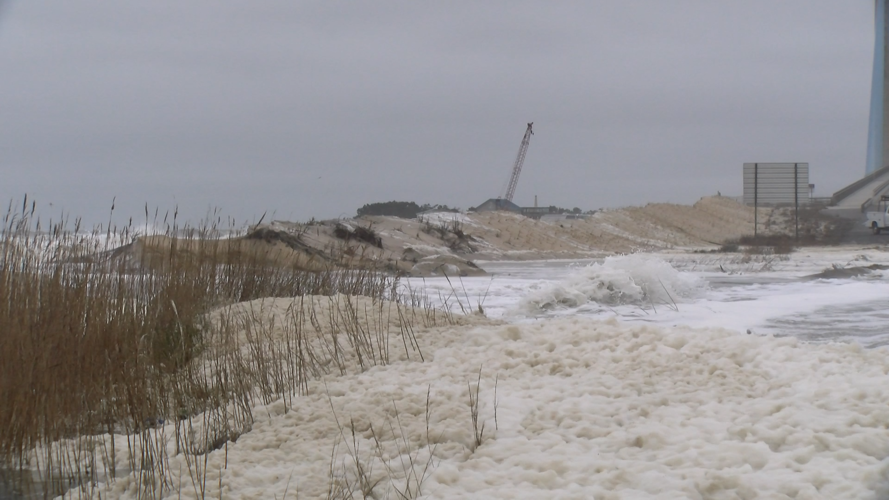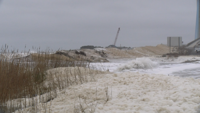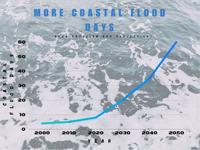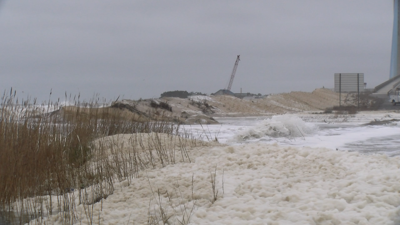DELAWARE - Coastal flooding is occurring more frequently along Delaware’s coast as the sea level rises. The frequency of coastal flooding is likely to continue to rise rapidly in the coming decades.
Tuesday morning, water levels rose high enough to cause a significant dune breach north of the Indian River Inlet Bridge. The breach resulted in Route 1 northbound being shut down for a few hours while repairs were made to the dune.
The Atlantic has breached the dunes along the Indian River Inlet and is now washing onto Route 1. A long duration coastal flood event is currently ongoing along the Delaware coast. Currently we are going through a 2 day stretch of coastal flooding, which is equal to the number of days it used to happen all year long. This rise in coastal flood days is a result of sea level rises of more than 10 inches since 1950 along the Delaware coast.
This coastal flooding event, that led to the dune breach and high waters throughout the region, was caused by a storm hundreds of miles offshore in combination with a full moon. This combination of events would not likely have caused flooding in the past.
Sea levels along the Delaware coast are rising at one of the fastest rates in the world. In the past 100 years or so, sea levels have risen between 15 and 16 inches. This rise in sea levels is being caused by a number of factors including water from melting glaciers, sinking land along our coast, expansion of waters as they warm, and various other factors.
This rise in sea levels has now pushed us to the point that we are beginning to see a dramatic rise in days per year where coastal flooding occurs. In the past 50 years, we have gone from averaging less than 5 days per year where coastal flooding occurred to now more than 10 days per year where coastal flooding occurs. It is projected, on a low end sea level rise scenario, that we will experience 60 or more days per year with flooding by 2050.

Coastal flood days are projected to increase, on a low end projection by NOAA, to 60 days or more by the year 2050.
“Sea level rise has now pushed those water levels right to where we built our infrastructure, our community, our roads, the groundwater systems that we do for irrigation, et cetera, so we are at that point it’s crossing that threshold a whole lot more,” explained Dr. John Callahan, a climate scientist for NOAA’s Center for Operational Oceanographic Products and Services, where he is contracted through Ocean Associates, Inc. Callahan previously was the lead author for the 2017 Delaware Sea Level Rise Technical Report.
In the future, it is going to be extremely important that Delaware builds up its coastal resiliency as coastal flooding becomes what is expected to be a monthly occurrence. Without changes to our infrastructure, Delaware could suffer significant damage to its roads, communities, farmlands, and way of life.









